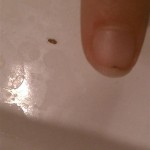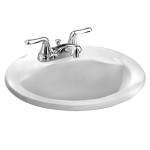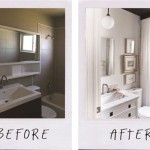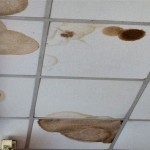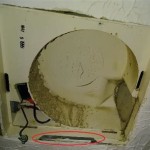21-Inch Wide Bathroom Vanity Units With Basin: Optimizing Space and Functionality
In compact bathrooms, maximizing space while maintaining functionality is crucial. A 21-inch wide bathroom vanity unit with a basin offers a practical solution, providing adequate storage and a washing area without overwhelming the available square footage. These units are particularly suitable for powder rooms, small apartments, and en-suite bathrooms where space is at a premium. This article explores the various aspects of 21-inch wide bathroom vanity units with a basin, including design considerations, material choices, installation guidelines, and maintenance tips.
Design Considerations for 21-Inch Wide Vanities
The design of a 21-inch wide bathroom vanity must prioritize efficiency due to its limited size. Several design elements can enhance both the aesthetics and usability of these units.
Basin Style: The type of basin significantly impacts the overall design. Options include integrated basins, where the basin is molded directly into the countertop; undermount basins, which are installed beneath the countertop; vessel basins, which sit on top of the countertop; and semi-recessed basins, which partially sit within the countertop. Integrated basins offer a seamless and easy-to-clean surface, while vessel basins can add a touch of contemporary style.
Storage Solutions: Maximizing storage within a small vanity is essential. Designs often incorporate a combination of drawers, cabinets, and open shelving. Drawers are ideal for storing smaller items like toiletries and makeup, while cabinets can accommodate larger items like cleaning supplies and towels. Open shelving provides easy access to frequently used items and can contribute to a more open and airy feel.
Countertop Material and Design: The countertop material influences the vanity's durability and aesthetic appeal. Popular choices include engineered stone (quartz), solid surface materials (like Corian), natural stone (granite or marble), and ceramic tile. Engineered stone offers a balance of durability, affordability, and design flexibility. The countertop’s edge profile, such as a bullnose or beveled edge, can also affect the overall style.
Style and Finish: 21-inch wide vanities are available in a range of styles, from traditional to contemporary. Common styles include shaker, farmhouse, and minimalist designs. The finish of the vanity, such as painted, stained, or laminate, can complement the existing bathroom décor. Neutral colors like white, gray, and beige are popular choices, as they create a sense of spaciousness.
Faucet Compatibility: It is crucial to select a faucet that is appropriately sized and styled for the vanity. The faucet’s reach and height should be compatible with the basin to prevent splashing and ensure ease of use. Common faucet types include single-hole faucets, widespread faucets, and wall-mounted faucets. A single-hole faucet is generally the most practical option for a 21-inch wide vanity.
Material Choices and Durability
The materials used in constructing a 21-inch wide bathroom vanity unit significantly impact its durability, water resistance, and overall appearance. Selecting appropriate materials is critical to ensure the longevity of the unit, especially in the moisture-rich environment of a bathroom.
Cabinet Materials: Common cabinet materials include solid wood, plywood, MDF (medium-density fiberboard), and particleboard. Solid wood offers the greatest durability and water resistance, but it is also the most expensive option. Plywood is a good alternative to solid wood, providing strength and resistance to warping. MDF is a cost-effective option that offers a smooth surface for painting or laminating. Particleboard is the least expensive option, but it is also the least durable and most susceptible to water damage.
Countertop Materials: Countertop materials must be durable, water-resistant, and stain-resistant. Engineered stone (quartz) is a popular choice due to its durability, non-porous surface, and wide range of color and pattern options. Solid surface materials (like Corian) are also non-porous and resistant to stains and scratches, but they are less heat-resistant than engineered stone. Natural stone (granite or marble) offers a luxurious look, but it requires regular sealing to prevent staining. Ceramic tile is a durable and affordable option, but the grout lines can be difficult to clean.
Basin Materials: Basin materials should be durable, stain-resistant, and easy to clean. Common basin materials include vitreous china, porcelain, fireclay, and stainless steel. Vitreous china and porcelain are durable and resistant to chipping and scratching. Fireclay is a more robust material that is resistant to heat and chemicals. Stainless steel is a durable and hygienic option, but it can be prone to water spots and scratches.
Hardware Materials: The hardware, including knobs, pulls, hinges, and drawer slides, should be made of durable materials that can withstand frequent use and exposure to moisture. Stainless steel, brass, and chrome are common choices for hardware. High-quality hardware will ensure smooth operation and prevent premature failure.
Finish Materials: The finish of the vanity, such as paint, stain, or laminate, should be water-resistant and durable. High-quality paints and stains will protect the cabinet materials from moisture and prevent fading or peeling. Laminates offer a durable and easy-to-clean surface, but they can be susceptible to chipping.
Installation and Maintenance Guidelines
Proper installation and regular maintenance are essential for maximizing the lifespan of a 21-inch wide bathroom vanity unit with a basin. Following these guidelines will help ensure that the vanity remains functional and aesthetically pleasing for years to come.
Installation Steps: Before installing the vanity, ensure that the plumbing connections (water supply lines and drainpipe) are properly aligned and accessible. The installation process typically involves removing the old vanity (if applicable), preparing the wall surface, installing the new vanity cabinet, connecting the plumbing fixtures, and sealing the vanity to the wall. It is crucial to follow the manufacturer's instructions carefully to avoid damaging the vanity or plumbing system.
Plumbing Connections: When connecting the plumbing fixtures, use Teflon tape to seal the threads of the water supply lines and drainpipe. Ensure that the connections are tight to prevent leaks. After connecting the plumbing, turn on the water supply and check for leaks. If leaks are detected, tighten the connections or replace the fittings as needed.
Sealing: Seal the vanity to the wall with a bead of caulk to prevent water from seeping behind the unit. This is especially important in areas where the vanity comes into contact with the floor or wall. Use a mildew-resistant caulk to prevent the growth of mold and mildew.
Cleaning and Maintenance: Regularly clean the vanity with a mild soap and water solution. Avoid using abrasive cleaners, as they can scratch or damage the surface. Wipe up spills immediately to prevent staining. Periodically inspect the plumbing connections for leaks and tighten the connections as needed. Check the hardware for looseness and tighten the screws if necessary.
Preventing Water Damage: Water damage is a common problem in bathrooms. To prevent water damage, ensure that the bathroom is properly ventilated to reduce humidity. Repair any leaks promptly to prevent water from seeping into the cabinet materials. Use a shower curtain or door to prevent water from splashing onto the vanity.
Addressing Mold and Mildew: Mold and mildew can grow in damp environments. To prevent mold and mildew growth, clean the vanity regularly with a mildew-resistant cleaner. Ensure that the bathroom is properly ventilated to reduce humidity. If mold or mildew is present, scrub the affected area with a solution of bleach and water, following safety precautions.
Extending Lifespan: To extend the lifespan of the vanity, avoid placing heavy objects on the countertop, as this can cause it to warp or crack. Use a cutting board when preparing food to protect the countertop from scratches. Avoid using harsh chemicals or abrasive cleaners on the vanity.
In summary, a 21-inch wide bathroom vanity unit with a basin represents a practical and space-saving solution for smaller bathrooms. Careful consideration of design, material selection, installation, and maintenance will ensure a functional and aesthetically pleasing addition to any bathroom.

Adelina 21 Inch Petite White Finish Bathroom Vanity

21 Inch Bathroom Vanity And Sink Cabinet Vessel Set Combo With Doors White Com

Timeless Home 21 In W Single Bath Vanity Blue With Marble Top Carrara White Basin Th25021hdbl The Depot

Toyo Wooden Finish 21 Inch Free Standing Bathroom Vanities Size 520 X 450 Mm Feet

Home Decorators Collection Artisan 26 In W X 21 D 34 H Single Sink Freestanding Bath Vanity White With Black Marble Top Md V1749 The Depot

850mm White Traditional Freestanding Vanity Unit With Basin And Chrome Handles Kentmere Better Bathrooms

Alaterre Furniture Bennet 24 In W X 21 D 34 H Bath Vanity Cabinet Without Top White Avan24whaa The Home Depot

Bathroom Vanity Units Sink Plumbworld

800mm Green Bathroom Vanity Freestanding Integral Ceramic Basin With Door Drawer Homary

Origin 21 Nova 30 In Cerused Natural Oak Undermount Single Sink Bathroom Vanity With White Engineered Stone Top At Com
Related Posts
